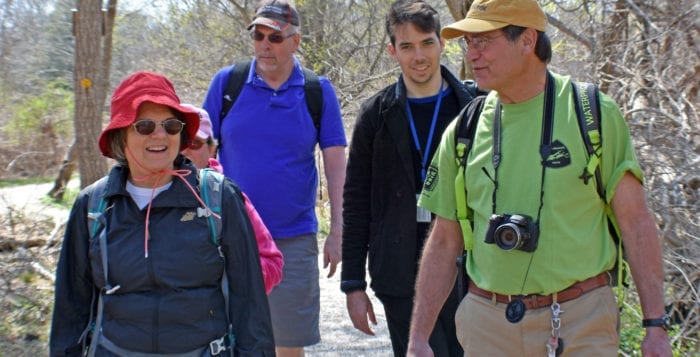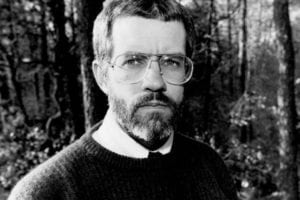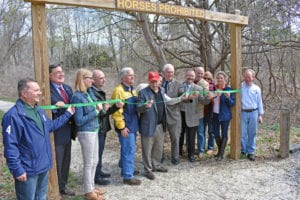New Pine Barrens trail named after former director

A new Pine Barrens trail bears the name of Ray Corwin, the first director of the Central Pine Barrens Joint Planning and Policy Commission. Those who remember him said he was as calm, yet grand as the woods he loved so much.
“Ray Corwin was a friend, but he was also an inspiration,” state Assemblyman Steve Englebright (D-Setauket) said. “This trail is an invitation, [like he did], for people to get involved.”

The Port Jefferson resident passed away suddenly in 2010 at the age of 56. People who knew him said he worked day and night for 17 years to protect the approximately 50,000 acres of the Pine Barrens core, as well as preserve the natural beauty and resources of the area.
In the late 1980’s, Corwin envisioned a trail that would go from Route 25A in Shoreham all the way down to Smith Point County Park in Shirley, according David Reisfield, president of the Long Island Greenbelt Trail Conference. Corwin was also active for more than 25 years in the greenbelt conference, a hiking and preservation group, and was the group’s vice president at the time of his death.
“We are at this point trying to bring his dream to life,” Reisfield said. “Even as we stop at Yaphank now, we will eventually work our way all the way down to Smith’s Point. We’ll bring his dream to fruition.”
Local officials and environmental advocates came together at the Ridge Trailhead to officially open the new 12.1-mile trail from Rocky Point to Yaphank bearing Corwin’s name April 28.
When years of court battles over Suffolk’s pine barrens resulted in a 1993 state law creating Long Island’s 100,000-acre pine barren preserve, environmentalist Richard Amper said there was only one man both sides trusted to oversee the new sanctuary, and that was Corwin.
“I don’t think we would have advanced the Pine Barrens cause as quickly as we did without someone like Ray Corwin.”
— Ken LaValle
State Sen. Ken LaValle (R-Port Jefferson) said the knowledge of the jogger and veteran hiker, the first executive director of the Central Pine Barrens Joint Planning and Policy Commission, could never be replaced.
“I don’t think we would have advanced the Pine Barrens cause as quickly as we did without someone like Ray Corwin,” LaValle said. “It’s great to recognize such a great man, and even though it took eight years, it’s never too late to recognize someone who gave us so much.”
The Ray Corwin Trail connects to existing trails that start just off Route 25A in Rocky Point. The new walkthrough boasts sights of the glacial erratic boulder known as “Turtle Rock;” the Warbler Woods, which are home to more than 30 species of warblers; a pitch-pine/oak forest; a red maple/black gum swamp; and the colonial-era Longwood Estate.
“We’re a sole source aquifer and it’s so important to protect those lands, because that’s our drinking water,” said John Wernet, forester for the state Department of Environmental Conservation.
Reisfield said the project took so long because those working on it had to work with the DEC, local governments and the Town of Brookhaven, much in the way Corwin did when he was alive.

In his past, Corwin was originally responsible for developing a management plan for protecting the 50,000 acres in the pine barrens core, which cannot be built on, and enforcing rules of that plan and state legislation for regulating development in the 47,000-acre compatible growth area. Before taking the helm of the pine barrens commission, he had worked as a computer scientist and mathematician for Grumman Corp.
“This trail epitomizes what Ray tried to accomplish,” said John Pavacic, the current executive director of the Central Pine Barrens Commission. “It’s something that took work across all areas of government, as well as local groups.”
Creating a trail, according to trail advocate Kenneth Kindler, is as much engineering, planning and maintaining as it is using the area’s natural landscape to define the trail’s shape. He said that Corwin brought environmentalists and local officials together to protect the Pine Barrens.
“I remember him telling me once that I was focused too much on ATV’s ruining the trail’s ground,” Kindler said. “He said we couldn’t alienate people — that we needed as many people as we could to get involved. That was just the type of person he was. He was a people person — he could bring people together.”






